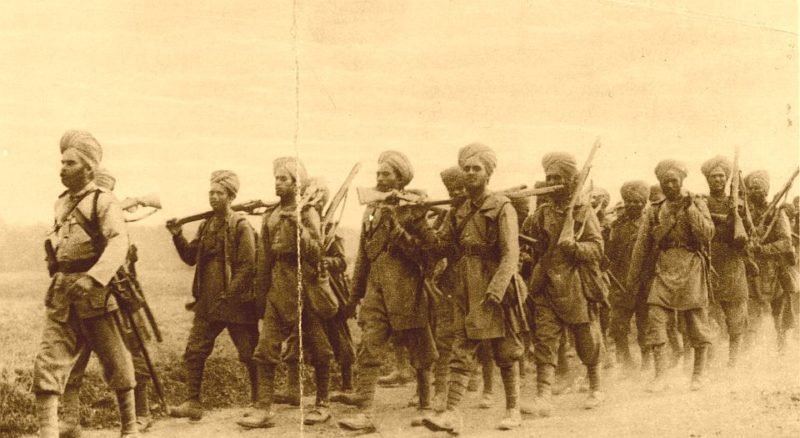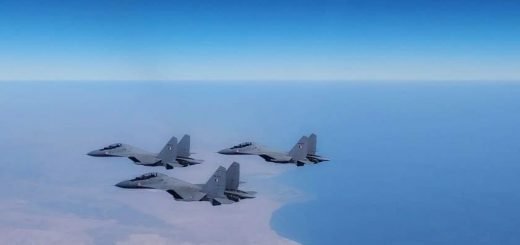Colonial India’s Engagement in the Middle-East

In today’s date, when we think about the Middle East and its relations with India, the first thing that comes to our mind is the oil and petroleum trade between the two regions. As of 2019, 60% of India’s imports of oil are from the Middle East. Foreign relations between India and the Middle Eastern countries have also improved over the past few decades. However, the relations between the two regions date as far back as the era of the Indus Valley civilization. There were close ties between India and the Middle East primarily driven by trade and commerce between the two regions, carried out in form of overland caravan trade via the Silk Road as well as through the Indian Ocean maritime trade routes. Both these regions were part of the flourishing spice trade which dates back to almost 4000 years ago. By the 13th century, a significant portion of the Northwestern part of the Indian Subcontinent had come under the reign of Middle Eastern rulers, which further improved the political and economic interaction. In this article, we will discuss the historical relations between the Indian Subcontinent and the Middle East and how these relations were altered over time. We will also talk about the involvement of the British Indian Army in the Middle Eastern theatre during the first and the Second World Wars.

Even in ancient times, India had close relations with the Arabian Peninsula. It is intriguing to know that that the first recorded maritime trade route connected the Indus Valley Civilization and the Civilization of Dilmun, on the Island of Bahrain. This gives us a fair idea of the time since when trade links have existed between India and the Middle East. Eventually, over the centuries, traders from different parts of the Arabian Peninsula entered the Indo- Arab trade. During this period most commodities moved from India and South East Asia to the Middle. These included primarily Cotton and spices. One of the most significant trade networks which existed during that period was the Spice Trade which spread as far as South East Asia. India fell on the crossroads between the Middle East and South-East Asia. The trade passed through ports like Kozhikode. Hence, the strategic location of India also helped in the formation of long-lasting ties. The only commodity which was exported from the Middle East was pearls. Around the same time, caravan trade was also carried out through the terrestrial routes via the Iranian plateau. The commercial linkages and trade also had cultural repercussions on the Indian subcontinent, the most important being the spread of Islam from the Middle East to other parts of the world.

However, the growth of British colonialism had adverse impacts on these trade arrangements between India and the Middle East. Both the Middle East as well as India no longer remained independent trading entities. From one of the most significant members of the global trading network, India was reduced to a mere supplier of raw materials to fees and support the British Industries, in the wake of the Industrial revolution. Gradually, European powers also took control of the Middle Eastern region. Starting from 1798, the British had three primary objectives in the Middle East:
- Protecting the maritime trade routes in the Mediterranean region, which were essential for carrying out trade
- Maintain stability in the Iran and Persian Gulf
- Ensuring the integrity of the Ottoman Empire to restrict the growing influence of the Great powers
Given the geopolitical aims and objectives of the British imperial powers, trade between India and the Middle East was considerably reduced. Both, the Middle East as well as India became sources of raw materials for the factories in Britain as demand increased exponentially because of the Industrial revolution. But, with the beginning of the Company rule in 1757, the relations with the Middle East strengthened. Administrative and military collaboration between the two regions increased. With the East India Company’s acquisition of Bombay, the trade and exchange between the two regions increased manifold. For the British government, India, as well as the Middle East, comprised a single commercial system. Eventually, Bombay became the headquarters for the British administration across Asia. Starting from 1820, the British established several protectorates in the Middle East and all of them were controlled and administered by British officials stationed in India. Furthermore, Indian soldiers have deployed to garrison these protectorates. Additionally, the dominance of the British in India, as well as the Middle East, allowed them to secure the maritime trade routes in the Indian Ocean as well as waterways like Suez Canal in the Arab region, which were necessary for the British to execute their trade between Europe and East Asia. The major commodities exported from British India were tea, calico (A cheap cotton fabric), jute, indigo, sugar, etc.
The growing tensions between countries in the build-up to the First World War added a new dimension of collaboration between the Middle East and British India. Indian soldiers constituted a considerable portion of the British Army engaged in European, Mediterranean and Middle Eastern theatres of War. Owing to the growth of nationalist sentiments in India as well as the Independence movement gaining momentum, India’s contribution to the first and the Second World War failed to get enough importance in Indian historical discourse.
In 1901, Oil was discovered in economically and commercially viable quantities in the Persian Gulf at Masjed Soleyman, in present-day Iran. At the start of 1914, news began to make rounds that the British control of the oil fields in the region, and consequently the Ottoman Empire started mobilizing its army. To counter the Ottoman army, the British Indian Government deployed Indian soldiers along with the British Army to protect these strategic assets. Apart from this, the British Indian Army also played a major part in securing the straits and maritime routes in the region; an example of one such mission being the Gallipoli Campaign, where the Allied powers intended to take control of the waterways which could serve as trade links with Russia.

This is how Indian soldiers entered the Middle Eastern theatre of War in the First World War. Out of seven expeditionary forces of the British Indian Army, as many as four were deployed in the Middle East itself. The Expeditionary force D was assigned the responsibility to guard the British oil fields around Basra. Even today, one can find name Indian soldiers who died in the war, etched on a pillar at the Basra War Memorial. Expeditionary forces E and F were deployed in Egypt. The Expeditionary force F played a very important role in guarding the Suez Canal, which could be considered a lifeline for the British colonial empire. Nearly 1.5 million Indian soldiers fought for the British Army in numerous wars across the world, Battle of Sheikh Sa’ad, Battle of Wadi, First Suez Offensive, Gallipoli Campaign, only to name a few in the Middle East. Further, we must also understand the cultural repercussions of the involvement of Indian soldiers in the Middle East. There were a large number of Muslims in the Indian army, and the Ottoman Sultan was considered as the Caliph by these people. Hence, the Muslim soldiers faced a dilemma but still, most of them remained loyal to the Allied powers.
Post WW1, the Middle East saw drastic changes; from the dissolution of the Ottoman Empire to widespread famines, mass displacement, et cetera. The Great Depression also had adverse impacts on the entirety of the Middle East and the trade that passed through the region. In the Second World War, The United States also entered the fray. The Allied Powers wanted to restrict the growing influence of Nazi Germany in Asia, and hence the Allies deployed armies to block the trade routes to Asia via the Middle Eastern region. Indian soldiers also played a significant role in this.
Apart from millions of Indian soldiers fighting both the World Wars, India also supported the armies of the Allied forces with essential materials as well. Madhushree Mukherjee writes in Churchill’s Secret War: The British Empire and the Ravaging of India during World War II, “the colony’s entire output of Timber, woollen textiles and leather goods, as well as three quarters of its steel and cement were diverted to the defence of the British Empire.” Almost 35% of India’s cotton textile production was used up for wartime commodities. With extensive agricultural and expansion schemes in the Middle East as well as the extension of railways in the war theatre, India was also compelled to send out 1855 miles of railway tracks, 229 locomotives and as many as 5989 vehicles to Mesopotamia, apart from food, ammunition and so on.

Also around the same time, the Indian Independence struggle was in full force. It is also said that the British recruited Indian soldiers without consulting the Indian political leadership, and this also triggered Mahatma Gandhi to launch the Quit India Movement in 1942.
But, as said earlier the involvement of Indian soldiers in war and specifically in the Middle Eastern theatre of war neglected in Indian historical discourse because it coincided with the independence movement and more importantly, the Indians saw the British as a bigger enemy than Nazi Germany owing to years of colonial rule and exploitation.
However, Post Independence, the Republic of India has maintained diplomatic relations with most of the Middle Eastern states. Countries like Israel are important strategic partners for India. The booming oil trade along with the Indian Diaspora in the Arab nations has further improved relations between the two regions in modern times.


















